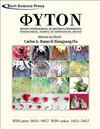氮源和浓度对微藻穆勒毛藻大量培养中蛋白质产生的影响
IF 1.2
4区 生物学
Q3 PLANT SCIENCES
Phyton-international Journal of Experimental Botany
Pub Date : 2016-09-03
DOI:10.32604/phyton.2015.84.331
引用次数: 1
摘要
蛋白质是微藻生物量的主要代谢物之一,微藻构成了水产养殖中生长的海洋生物的饮食,对其生长至关重要。这种成分的数量受营养、温度和光照强度等因素的影响。以f/2 (0.88 mol/L)(硝酸盐)为对照,研究了两种氮源(硝酸盐和尿素)在三种浓度下对毛氏毛毛藻生长、生物量和蛋白质的影响。NO3-培养基为2f (3.53mol/L)和4f (7.05 mol/L),尿素培养基为f/2 (0.88 mol/L)、2f (3.53mol/L)和4f (7.05 mol/L)。总的来说,在培养基中使用尿素比使用硝酸盐的生产参数更高。以尿素为氮源时,细胞浓度(2.83 × 106细胞/mL)、平均生长速率和累积生长速率(1.50 div/d和6.01个分裂)、干重(0.0044 g/L)和蛋白质比例(23.74%)较高。然而,电泳图谱上的大部分条带出现在NO3- (~6.5 ~ 90 kDa)的培养基中。本文章由计算机程序翻译,如有差异,请以英文原文为准。
Effect of nitrogen source and concentration to produce proteins in mass cultures of the microalgae Chaetoceros muelleri
Proteins are one of the major metabolites in biomass from microalgae that constitute the diet of marine organisms grown in aquaculture, and are essential for their growth. The quantity of this component is influenced by nutrients, temperature and light intensity, among others. We examined the growth, biomass production and protein of Chaetoceros muelleri with two sources of nitrogen (nitrate and urea) at three concentrations, using the medium f/2 (0.88 mol/L) (nitrates) as control. The treatments were the medium 2f (3.53 mol/L) and 4f (7.05 mol/L) with NO3-, and the medium f/2 (0.88 mol/L), 2f (3.53mol/L) and 4f (7.05 mol/L) with urea. In general, the productive parameters were greater using urea than nitrate in the media. Higher cell concentrations (2.83 x 106 cell/mL), average and cumulative growth rates (1.50 div/day and 6.01 divisions), dry weight (0.0044 g/L), and proportion of proteins (23.74%) were found when urea was used as the N source. However, most of the bands on the electrophoretic profile were present in the mediums with NO3- (~6.5 to 90 kDa).
求助全文
通过发布文献求助,成功后即可免费获取论文全文。
去求助
来源期刊
CiteScore
1.90
自引率
11.80%
发文量
17
审稿时长
12 months
期刊介绍:
Phyton-International Journal of Experimental Botany is an international journal that publishes on the broadest aspects of plant biology and ecology. The journal welcomes the original and exciting submissions that provide new and fundamental insights into the origins, development, and function of plants from the molecular to the whole organism and its interactions within the biotic and abiotic environment. Phyton-International Journal of Experimental Botany publishes outstanding research in the plant and ecology sciences, especially in the areas of plant physiology and biochemistry, plant metabolism, plant ecology and evolution, as well as those making use of synthetic, modeling, bioinformatics, and -omics tools. Manuscripts submitted to this journal must not be under simultaneous consideration or have been published elsewhere, either in part or in whole.

 求助内容:
求助内容: 应助结果提醒方式:
应助结果提醒方式:


